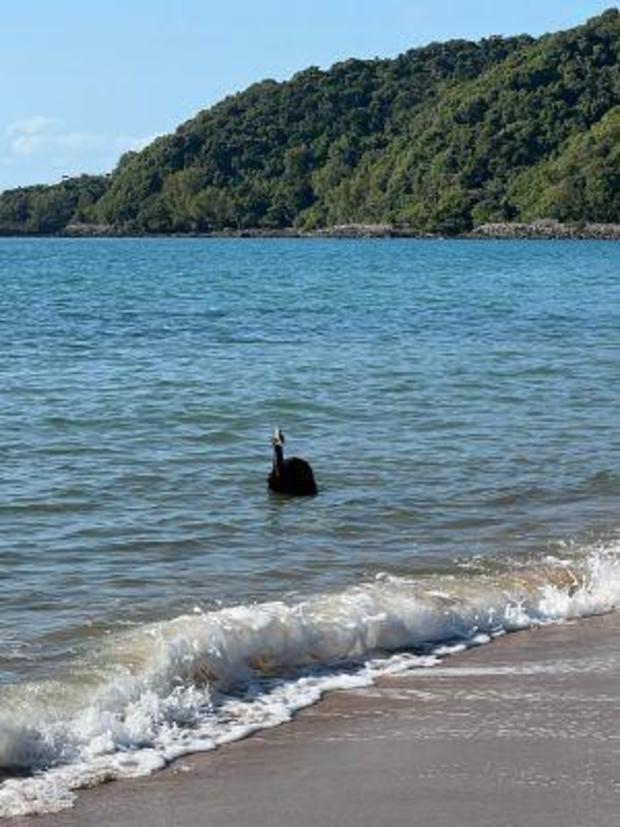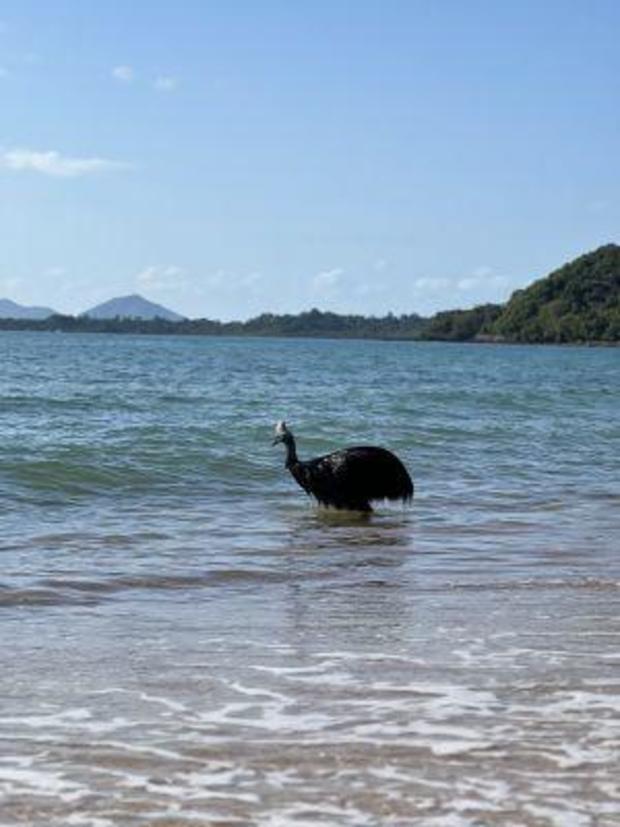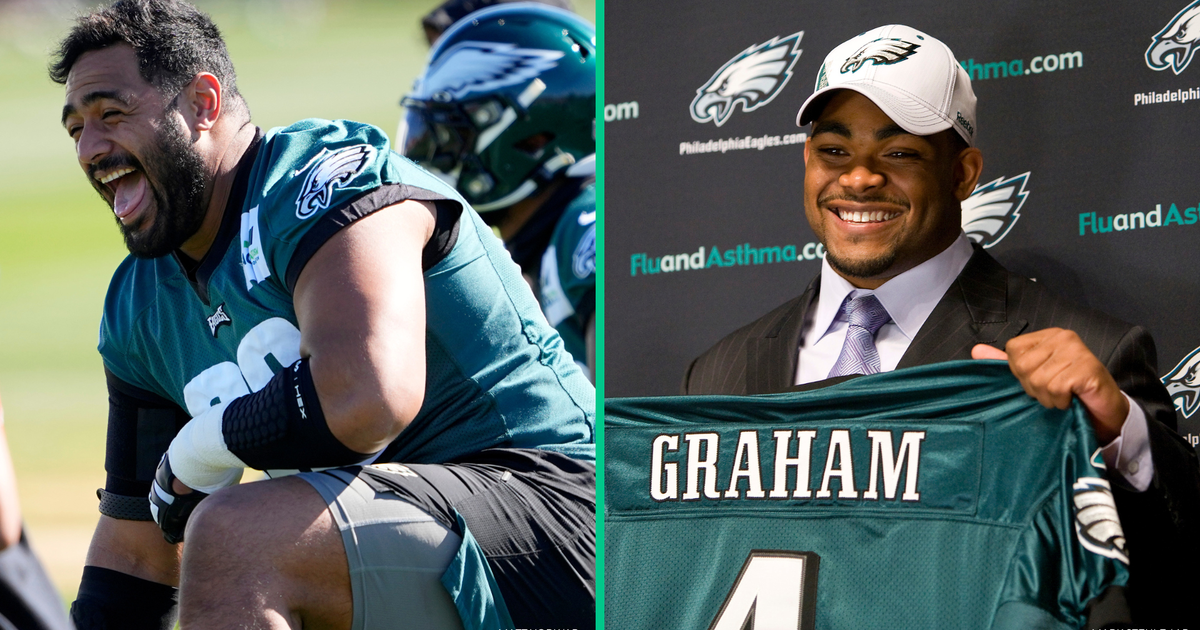Video shows "world's most dangerous bird" emerging from ocean, stunning onlookers
An enormous creature — considered by some to be the "world's most dangerous bird" — shocked beachgoers in Bingil Bay in northeastern Australia as it rose from the water and shook itself off, the Queensland Government said in a news release.
Called a cassowary, the towering, flightless bird is related and somewhat similar in appearance to an ostrich or emu, and can grow to be as tall as a human person. One of three surviving species of cassowaries in the world, only one — the southern cassowary — is found in Australia. The bird's native habitats include the tropical rainforests of northeast Queensland, Papua New Guinea, which is across the water from those Queensland rainforests, and some surrounding islands.
The southern cassowary has a distinct look, with Queensland environmental officials describing its characteristic glossy black plumage, a tall, brown "helmet" on top of its head, and a "dagger-shaped" claw attached to the innermost toe on each of its feet. They are Australia's heaviest bird, with females weighing up to about 165 pounds and males weighing as much as 120.
The sighting in Bingil Bay was reported to Australia's Department of Environment and Science on Oct. 31. A visitor initially alerted Nikita McDowell, a Bingil Bay campground host, after spotting the cassowary swimming about 200 meters, or 650 feet, offshore. McDowell told Queensland government officials that she followed advice from local wildlife carers and the Queensland Parks and Wildlife Service to monitor the bird until it moved on when ready.
"I went to make a coffee and when I returned, it was gone," she said.
Cassowaries are shy and typically hard to spot, according to the Library of Congress, which writes in a description of the "world's most dangerous bird" that although the creatures are powerful, they are not overly aggressive and attacks are rare. The birds "can do a lot of damage" if they are provoked, though, and the library notes that some attacks in the past have been deadly.
A cassowary killed its owner on the man's farm near Gainesville, Florida, in 2019. The bird apparently attacked him when he fell in its vicinity, authorities said at the time. They believed the owner, 75-year-old Marvin Hajos, was breeding cassowaries on his property.
While they cannot fly, cassowaries are strong swimmers and, on land, have been clocked running at speeds of up to 31 miles per hour. In Australia, the southern cassowary is an important contributor to rainforest ecosystems, as it spreads the seeds of rainforest trees, the government said, adding that some of those seeds are too large for any other animal to swallow and disperse them.
"The southern population of the southern cassowary is listed as endangered under the Nature Conservation Act 1992, and it is important that, sick injured or orphaned cassowaries are reported to QPWS," said Stephen Clough, a wildlife officer, in a statement about the Bingil Bay sighting to the Queensland Government.
"We're not sure how long this animal was in the water or why it went for a swim but the footage is astonishing," he said.





